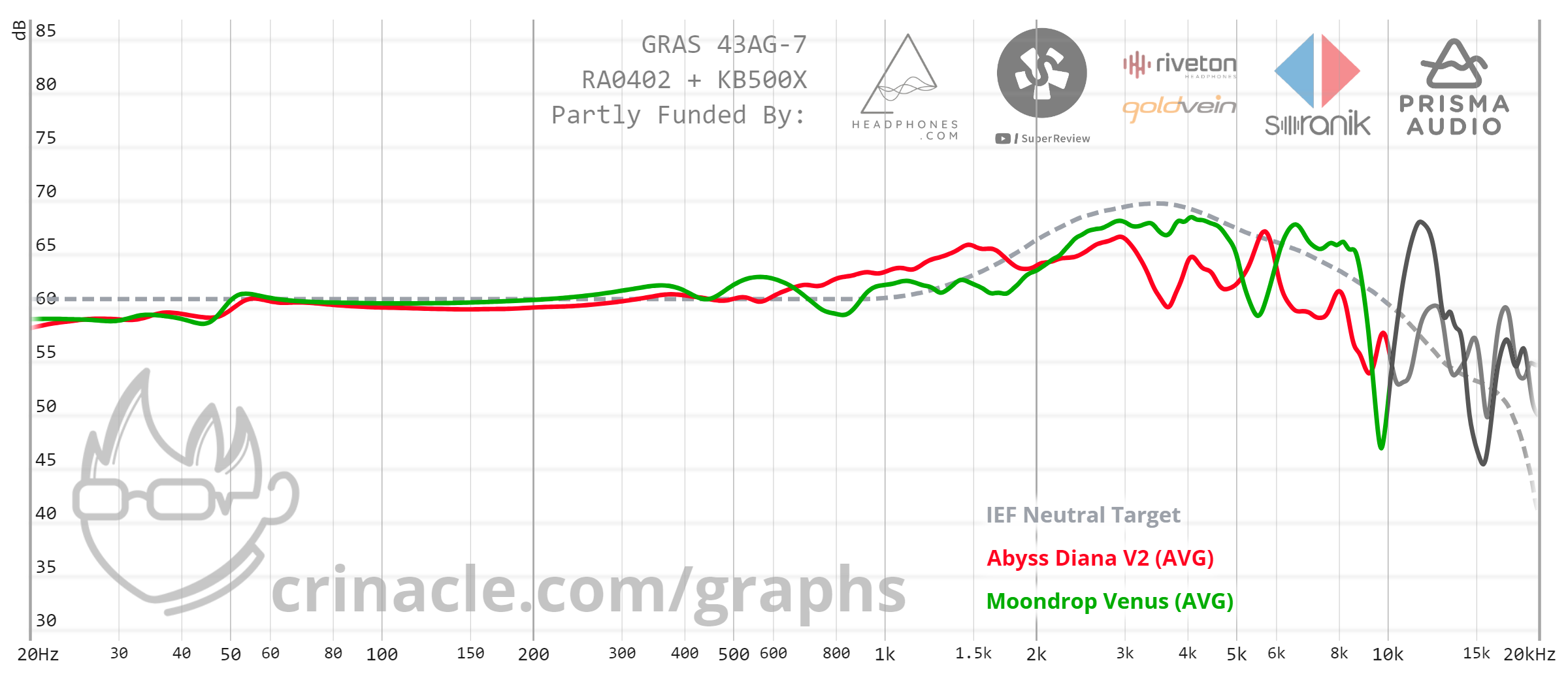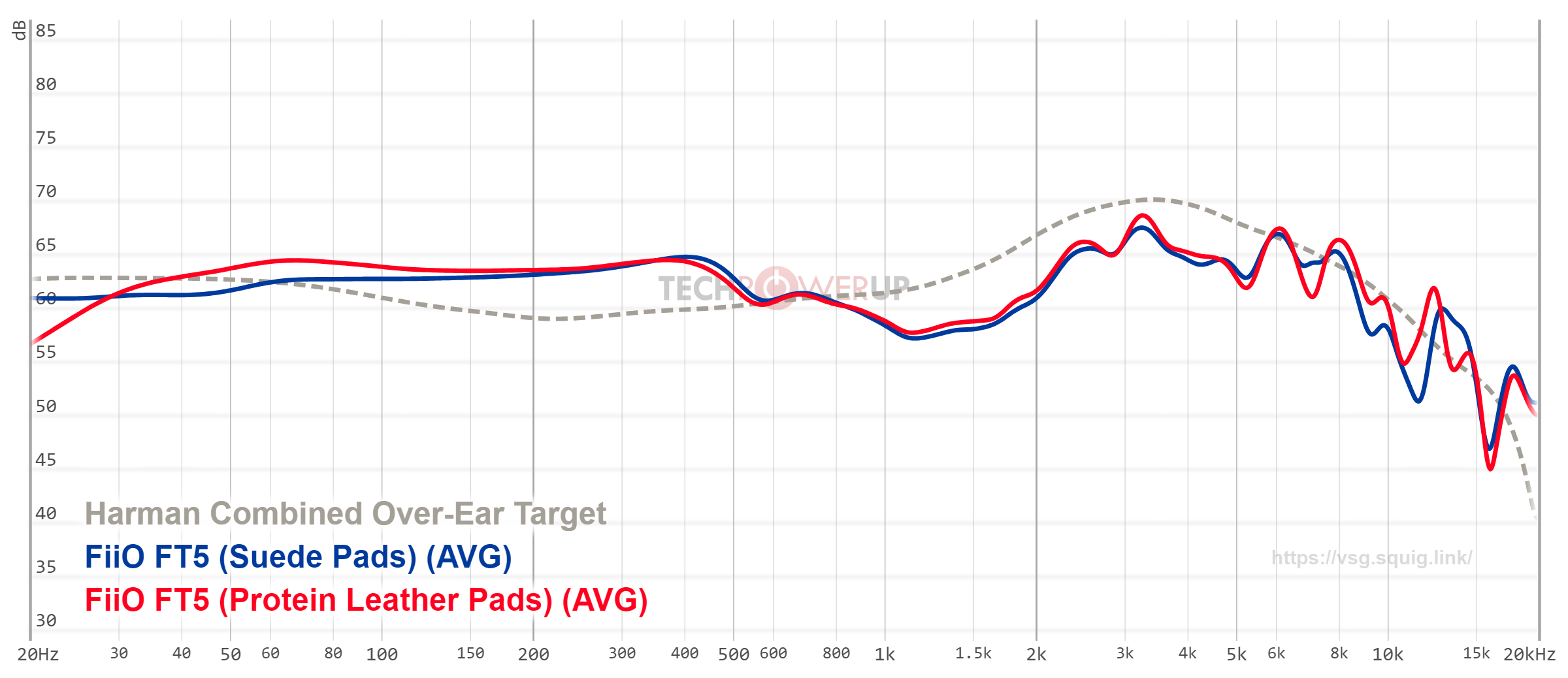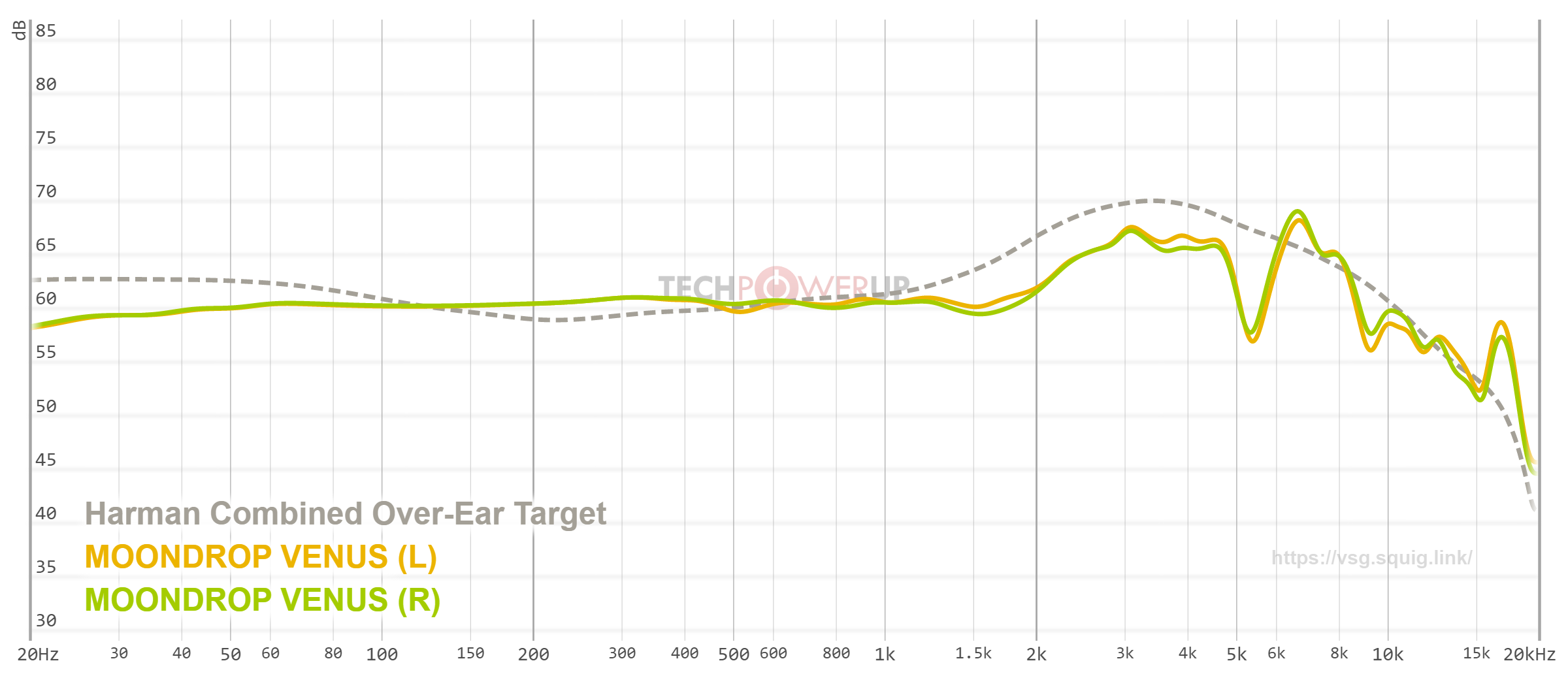Terriero
Headphoneus Supremus
Well, you can understand this: "ménage à trois" 

I love both of them and love to see fellowship between famous musicians


I love both of them and love to see fellowship between famous musicians








That is indeed similar in the lower frequencies! Thanks for providing all the graphs, including your previous posts showing how the Venus FR stacks up against some popular cans. I've reviewed those quite a few times now.As for the respective FR of the two headphones (here Abyss DIANA V2 versus Moondrop VENUS); well, there's a similarity of FR here in the bass (sealed pads), between 20 and 200 Hz, and perhaps also, pads slightly unsealed (broken seal)?
Is this a characteristic of the Abyss DIANA and Moondrop VENUS drivers?
Who knows?

The VENUS truly is a special headphone in a class of its own.



That is indeed similar in the lower frequencies! Thanks for providing all the graphs, including your previous posts showing how the Venus FR stacks up against some popular cans. I've reviewed those quite a few times now.
And I can confirm, there are special "ported" pads Abyss makes for the Diana. They essentially have small openings between the plastic that connects the pad to the headphone, and they indeed make a difference in the lower frequencies.
Moondrop can make something similar for the Venus. They could make a earpad with a plastic circle that goes between the part that slips onto the headphone and the inner part of the earpad. It would be like a 3 piece earpad so not sure how economical for the company... but I think owners of the Venus would appreciate it. I know I would, and not many headphones seem to have this special..."feature" (superpower?) As you mentioned I agree, it is probably somehow based on the driver design.
And yes a class of their own...I agree
Ports in the "porto" pad

I still can't get over how beautiful the Venus is

Hi.Any chance of comparison with Fiio FT5 ?



The fact both channels on the Venus balance so perfectly speaks to the controls that went into producing this headphone.Hi.
This is the only comparison I could find between these two headphones : FiiO FT5 and Moondrop VENUS.


Note; the measurement platform is not the same as Crinacle's, and the neutral target curve is not the same either; Harman Combined Over-Ear Target raises the bass level of approximately +3 dB.
Note bis: You can also enhance the bass of the VENUS by +2 to +3 dB SPL between 30 and 60-70 Hz, without modifying the FR in the midrange and the treble, without changing the pads, just by very slightly breaking the seal of the pads, as indicated in my previous posts.
See measurements also here : https://www.head-fi.org/threads/moo...-still-reasonable-price.970569/#post-17824148
Edit: I also found this:
- 90mm diameter planar driver; 6 micrometer thick diaphragm ; non-profiled N52 Neodymium magnets (square) for the FiiO FT5.
- 100mm diameter planar driver; 2 micrometer thick diaphragm ; N52 profiled Neodymium magnets (round) for the Moondrop VENUS.
Hi.The fact both channels on the Venus balance so perfectly speaks to the controls that went into producing this headphone.

I just got the PARA and tried out using the BTR7 to amp it. The amp did ran warm over time and you do need more energy to run the planar. Sound wise the bass on it is impressive, but if you want the hifi experience you will need a desktop amp.@eric65 Hello again, i'm looking for an all rounder heaphone since as a student i've got not much money to invest on hobbies, therefore, do you think that either Venus or Para could be an all rounder? Im leaning towards Para cause obviously half of the price but Venus is still on my mind.
Hello everyone.Otherwise, concerning the adjustment of the VENUS pads to get the best bass (slightly raised in level (by +2 to +3 dB) and also more impacting (percussive).
I rotated the pads so that the front seam of the pads was slightly raised to the 13:30 position (instead of 15:00), so that this front seam was exactly at the same level as my glasses' temples, once in place.
As for the anterior-posterior pivot of the pads, well, it's set to neutral (the pads are not pinched either forwards or backwards, they're at the neutral point).
With this pad arrangement, there's a small gap of a few mm at the front of the pads, breaking the perfect seal of the pads to boost bass (both in level and impact).
However, unsealing must be fine-tuned: the daylight (spacing) thus created on the front of the pads (breaking the seal) must be sufficient, but not too much, to obtain what we're looking for: more bass and more impact.
This seal break modifies the bass but not the midrange (unmodified vocals and guitars sound).
I encourage you to experiment in this way.
I just got the PARA and tried out using the BTR7 to amp it. The amp did ran warm over time and you do need more energy to run the planar. Sound wise the bass on it is impressive, but if you want the hifi experience you will need a desktop amp.
That said, the Para is heavy. My neck became sore after half an hour from listening to it lying down. Much easier on the neck if you listen sitting up instead.


